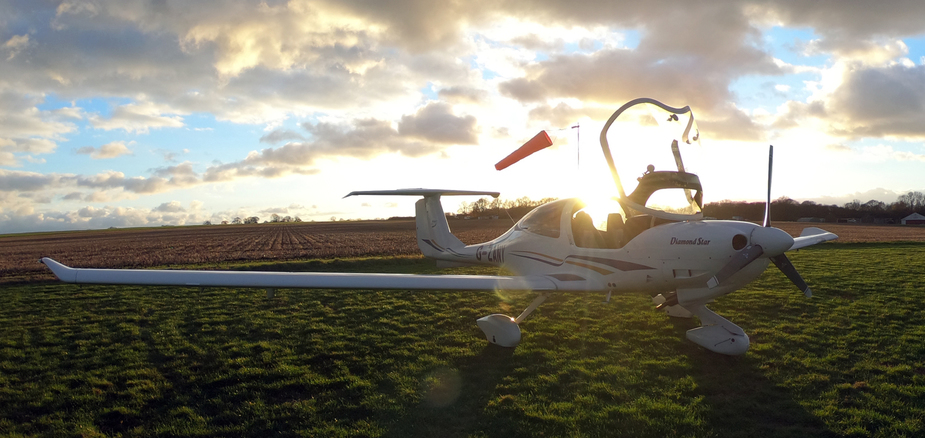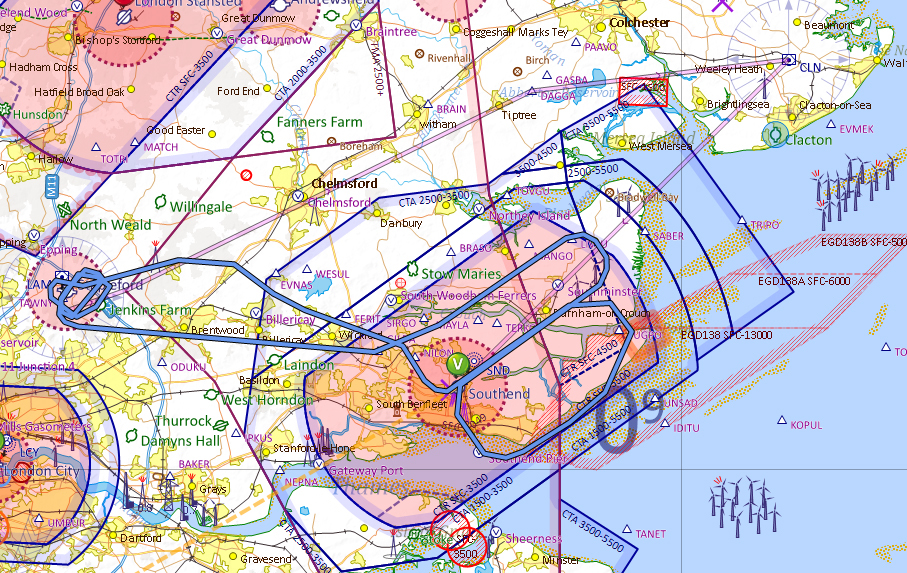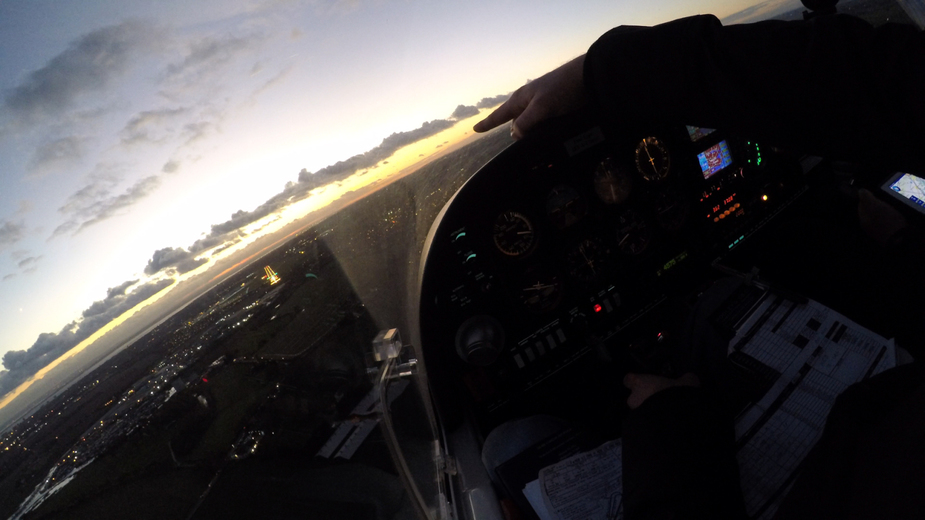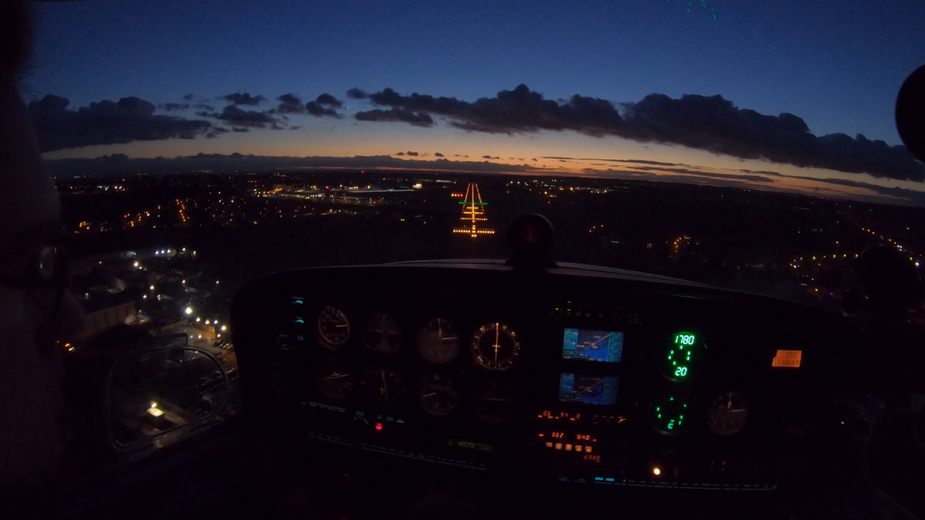Pre-Flight -
I’ve flown all across the world as crew and some of my most notable experiences of turbulence have put me off, such as Houston with 64,000ft Thunderstorms, weather across the ITCZ to South Africa, flying across the notorious Bay of Bengal and in a 300mph jetstream across the North Atlantic.
But nothing compares to being thrown around by yourself in a light aircraft on a windy frontal day, and ever since that final flight of 2017 I’ve been very put off by the slightest of windy days. Lots of turbulence and lots of experience with that feeling I’d rather be on the ground than in the air.
Having had a long time away from flying, it took some confidence for me to head to the airport with the wind forecast as it was. Rather than cancel for the second week in a row, I headed to the airport so I could gather my thoughts and explain to my passenger what we was going to do.

Having checked the aircraft over and realised that the wind was awful, it was probably best we delayed the flight. This meant our 1400 slot at Southend for two ILS approaches and the idea of stopping for a few hours would not happen. I rang back, but the next available slot was 1600hrs. After chatting with reception at Stapleford, night flying would not happen due to the crosswind. But having spoken to some of the instructors they was keen to get flying later that day if the wind dropped of as forecast.
TAF EGMC 090756Z 0909/0918 26018KT 9999 SCT035 TEMPO 0909/0912 6000 SHRA TEMPO 0909/0910 27018G28KT PROB30 TEMPO 0909/0911 4000 +SHRA BECMG 0910/0913 31015G25KT BECMG 0916/0918 29010KT=
So I took Southend up on the flight booking at 1600hrs, with a routing towards CLN VOR for some VOR/DME tracking and climbing up to 4-5000ft for some cloud surfing fun. I had to wait till 1530 to find out if anyone was night flying as I did not want to come back to a (lights off) Stapleford in the dark, as that meant a rather expensive divert back to Southend and having to collect the aircraft before work the next day.
We departed 21L with a slight crosswind before making our way towards Southend, but we did not fly to CLN VOR. I was relatively surprised how little turbulence we had considering the wind at the surface being 10-12 knots and 34 knots at just 2000ft. Earlier in the day I think it would have been pretty uncomfortable, although plenty of people were flying so it couldn’t have been that bad?

The first approach was to be hand flown, with a controller initiated go-around at the threshold – although a departing ATR meant the go-around would most likely be quite a dramatic one. We was given an amended clearance. I recently purchased a new flight-board specific to the Diamond Aircraft and other stick aircraft, so this took a little bit of getting used too. But works well for my type of flying.

I conducted a go-around over Southend-on-Sea but probably turned at an unsafe altitude of 400ft, although this was versus the likely chance of hitting wake-turbulence if I hadn’t of turned. It was a bit of last minute risk-assessment, but maybe pegging the aircraft at 80knots and waiting for 500ft would probably have been more sufficient.
The second approach originally was going to be based on the autopilot with me primarily monitoring what was happening with the ability to maintain safe flight, but I decided to hand fly for the experience of hand flying sakes. I haven’t used the autopilot since I flew the aircraft in May 2018. We was going to land on this approach originally, but this now became a quick touch and go and back to Stapleford for a VFR night landing.

The approach was a little bit more bumpy than the previous, but not much more. As I approached the threshold the aircraft became unstable and I lost 10 knots as a change of wind direction/wind speed made for quite an uncomfortable experience that forced me to scrap the approach and fly back to Stapleford. I simply had enough for one day and was happy with my hand flown ILS approaches. The question is was I right to go-around?
Here is a rather extended video of the learning experience and fun evening.
You should always go-around is a tricky one, the less experienced don’t do it and more experienced will “tryto save it” until it bites, so who does go-arounds ;) ? Also aircraft dependent I would argue, you may only need few go-arounds on a C172 but probably many on a M20J?
For cross-wind, I flew the same day (Dec 9th?) on Lydd, I tried to get familiar with piper autopilot for NAV use, surprisingly it did not couple well on 30 degres cross-wind corrections (max is 15) to what is already a “5 degres offset ILS”, my crosswind landing on the day was fine, it is crosswind takeoff where I had “to save it”, I got away with it on the day but I still need to learn “to stop it”…
If you were not comfortable about how the approach was going, sure, you were right to go-around. I see no discussion about it. The only exception I think of is if the go-around can be expected to put you in a worse situation still. E.g. your plane is iced up, and the go-around brings you right back into more icing for a full missed approach + new approach, many minutes. Or at a mountain “altiport” when the “go-around” brings you into a mountain you won’t be able to avoid. In that case, you are committed to land and “try to save it”.
Ibra wrote:
You should always go-around is a tricky one, the less experienced don’t do it and more experienced will “tryto save it” until it bites, so who does go-arounds ;) ? Also aircraft dependent I would argue, you may only need few go-arounds on a C172 but probably many on a M20J?For cross-wind, I flew the same day (Dec 9th?) on Lydd, I tried to get familiar with piper autopilot for NAV use, surprisingly it did not couple well on 30 degres cross-wind corrections (max is 15) to what is already a “5 degres offset ILS”, my crosswind landing on the day was fine, it is crosswind takeoff where I had “to save it”, I got away with it on the day but I still need to learn “to stop it”…
I guess it’s all about risk management and the fact most pilots are unwilling to go-around. Obviously the camera doesn’t pick it up but I had a wing drop and the stall horn set of; including a slight pitch up moment before conducting the go-around. I lost about 10 knots, but it was nowhere near the stall.
I flew a crosswind landing back into Stapleford and it was fine. Although I’ve never really had a strong wind with the autopilot on, so I might have to see how it goes. Which autopilot does your aircraft have? Yes it was Dec 9th.
lionel wrote:
If you were not comfortable about how the approach was going, sure, you were right to go-around. I see no discussion about it. The only exception I think of is if the go-around can be expected to put you in a worse situation still. E.g. your plane is iced up, and the go-around brings you right back into more icing for a full missed approach + new approach, many minutes. Or at a mountain “altiport” when the “go-around” brings you into a mountain you won’t be able to avoid. In that case, you are committed to land and “try to save it”.
The approach was pretty much stable till 26 minutes 50 seconds in, during the last 500ft. A change from 34 knots at 2000ft to the surface probably mostly took place at a lower altitude. It was only 10 knots across.
I guess in that situation you would want to land at all costs. I also guess with all that runway available at Southend I probably could have continued safely. But for light general aviation, what is “Unstable”? I hadn’t briefed for a go-around on the second approach, however having just flown one I guess I was more in the cognitive stage than the motor stage of ability to make decisions.
Is the weather getting worse? Is there a better alternative? Are you almost on the ground?
“Sometimes it’s better to wait until the crashing noises stop.” (Sammy Mason. US WW2 fighter pilot, test pilot, airshow pilot, on leaving runway as a solo Pu/t in a Stearman, attempting to go-around from a bad landing.)
@pilotrobbie yes the wind on Dec 8th/9th was really tricky (45kts at 2000ft on the 8th), the aircraft has an old piper wing leveler with hdg/nav coupling that I want to fiddle with on a windy day while I can still see outside
Personally, I find it hard to go-around on 2km runways if the aircraft poh says 400m landings, but I tend to be careful on short airstrips where “if you often go around then go away”…